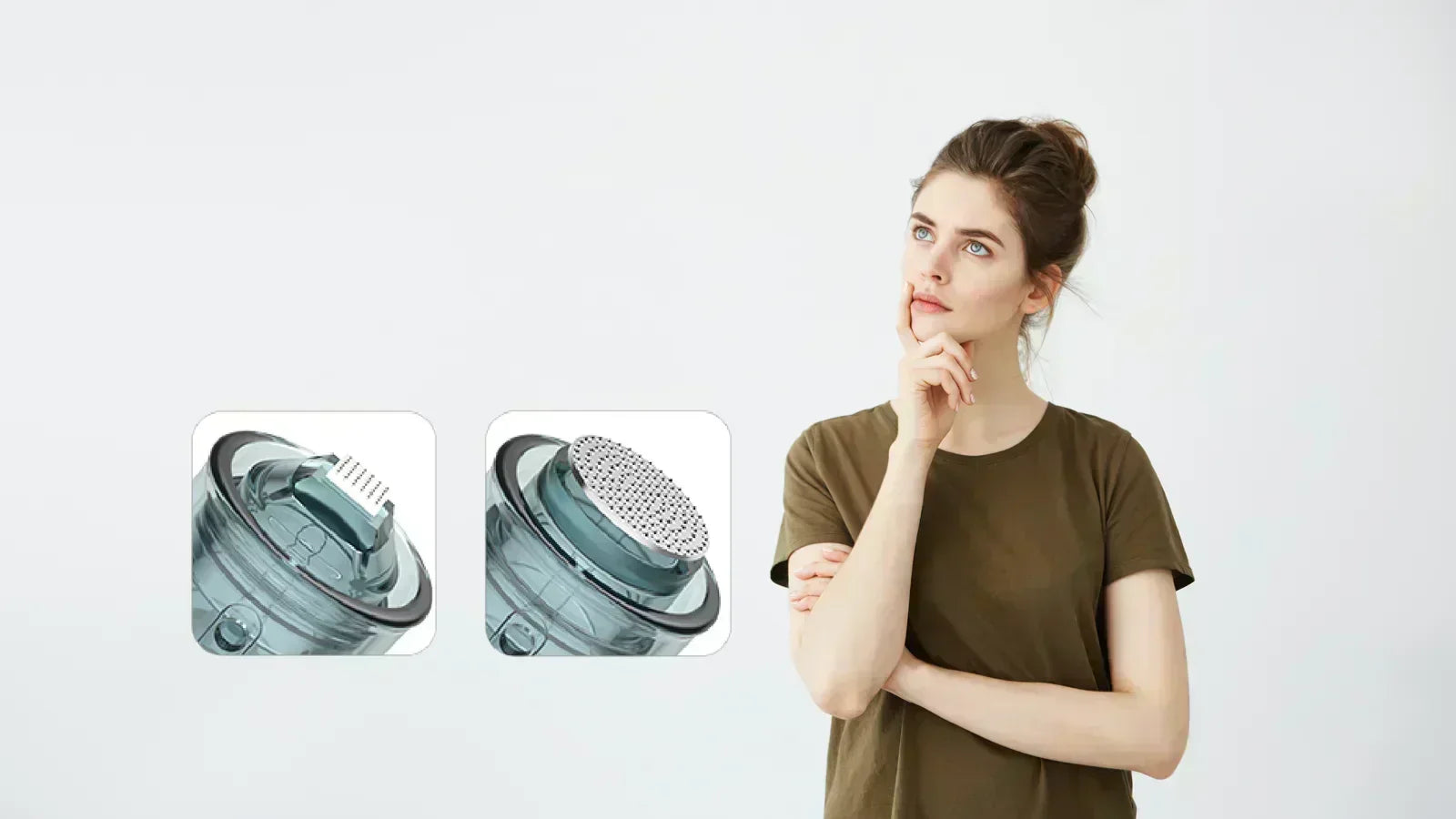Individually sealed in sterile packaging. Suited for acne scars, wrinkles, spots, fine lines, hyperpigmentation, large pores treatment.

Both microneedling and nanoneedling offer practical solutions for boosting skin's natural exfoliation process and reducing the signs of aging. These treatments stimulate your skin's self-repair mechanism, boosting collagen and elastin to revitalize the skin. They also enhance the absorption of beneficial serums, maximizing their effectiveness. While both procedures offer minimal healing time, their key differences are crucial for selecting the proper treatment for your specific needs.
Microneedling, a medical-grade procedure, penetrates deeper into the skin, making it ideal for addressing more pronounced skin concerns. It effectively reduces the appearance of wrinkles, crow's feet, smile lines, and the subtle marks left by acne.
Nanoneedling, a gentler cosmetic facial therapy, works more superficially. While it also improves skin texture and reduces the appearance of fine lines, it's not designed to treat deeper wrinkles, significant skin laxity, or more severe scarring. Specifically, nanoneedling isn't recommended for severe facial scarring from acne, stretch marks, or operation scars, including those resulting from procedures like tummy tucks.
The primary technical difference between microneedling and nanoneedling lies in the cartridges utilized during each treatment. Depending on the specific treatment goals, microneedling employs cartridges with fine needles ranging from 12 to 42. In contrast, nanoneedling uses cartridges featuring metal or silicone cones arranged evenly across a flat cartridge head. Therefore, while "nanoneedle" suggests using needles, it refers to tiny cones or hemispheres. Notably, practitioners can use a Dr. Pen microneedling device for nanoneedling by switching to the appropriate cartridges.
Understanding these differences lets you decide which treatment best suits your skincare needs.
Ultimately, the choice between microneedling and nanoneedling hinges on your individual skin concerns and desired outcomes. Microneedling offers a more intensive approach for deeper issues, while nanoneedling provides a gentler alternative for surface-level rejuvenation. Consulting with a skincare professional can help determine the most suitable treatment for achieving your aesthetic goals.
Best Ingredients for Younger-Looking Skin
Discover the most effective anti-aging skincare ingredients — retinol, peptides, vitamin C, niacinamide, and more — for firmer, smoother, younger-looking skin.
All About Microneedling With Exosomes
Discover how microneedling with exosomes accelerates skin repair, boosts collagen, reduces wrinkles, and enhances glow. Learn benefits, safety, and results.
The Ultimate Guide to Microneedling Serums for Glowing Skin
Learn how microneedling serums boost collagen, improve skin texture, and enhance glow. Discover the best ingredients and how to choose the right serum.